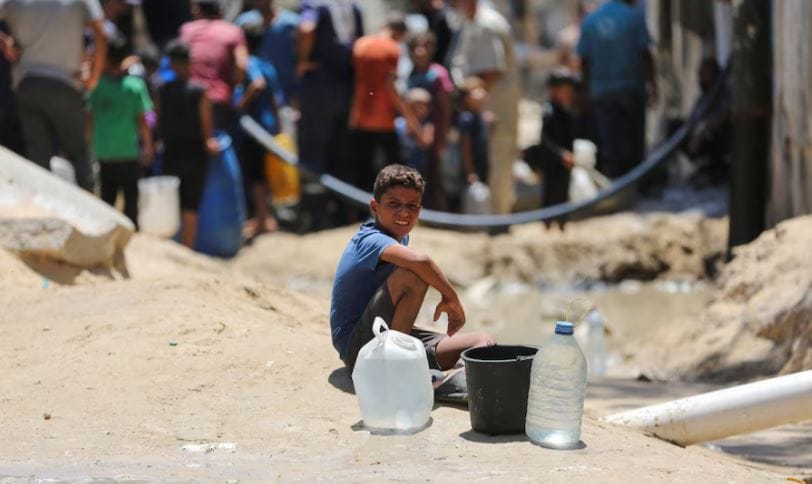Escalating Humanitarian Crisis in Gaza
The recent destruction of more than 30 water wells in Gaza has further exacerbated the already dire humanitarian situation in the region. According to local officials and residents, this deliberate act by the Israeli military between July 18 and July 27 has deepened the suffering of Palestinians in the southern towns of Rafah and Khan Younis. This devastation comes amidst ongoing air strikes that have ravaged much of Gaza, transforming the area into a barren landscape fraught with a severe humanitarian crisis.
Daily Struggles for Water
The obliteration of these critical water resources has compounded the challenges faced by Gaza’s residents, who are now grappling with an acute shortage of clean water. The daily routine for many involves long queues at makeshift water collection points. Children, often carrying containers that are too heavy for them, traverse long distances to secure even small amounts of water. This routine highlights a grim reality where access to basic necessities is heavily compromised.
Gaza City, a central hub in the region, has nearly lost all its water production capacity. According to a recent report by Oxfam, 88% of Gaza’s water wells and 100% of its desalination plants have been damaged or destroyed. This loss of infrastructure exacerbates the existing water crisis, which was already severe due to contamination from seawater and sewage.
The Toll of Prolonged Conflict
The ongoing conflict, which began on October 7 when Hamas launched an attack resulting in substantial casualties and hostages, has intensified the humanitarian crisis. In retaliation, Israel’s offensive has led to the death of more than 39,000 people and the destruction of vital infrastructure. The bombings have left much of Gaza in ruins, including the essential facilities required for health and survival.
The current situation in Gaza underscores the severe impact of the conflict on civilian infrastructure. The destruction of water wells not only contributes to the immediate suffering but also poses long-term challenges for recovery and stability in the region. Local residents, like Youssef El-Shenawy, express frustration and exhaustion as they endure prolonged waits under harsh conditions to obtain water. This desperation reflects the broader plight of Gaza’s population, which is increasingly disillusioned by the lack of effective intervention and relief efforts.
Summary
The recent destruction of water wells in Gaza represents a significant escalation in the region’s ongoing humanitarian crisis. With over 30 wells damaged, residents face severe water shortages exacerbated by ongoing conflict and infrastructure collapse. The international community’s inability to secure a ceasefire or provide adequate relief underscores the depth of the crisis. As Gaza continues to struggle with these challenges, the destruction of essential resources like water wells highlights the urgent need for humanitarian intervention and a resolution to the ongoing conflict.
Key Learning Points:
| Point | Description |
|---|---|
| Destruction of Water Wells | Over 30 water wells were destroyed by Israeli forces, worsening the humanitarian crisis in Gaza. |
| Water Shortages | Gaza City has lost nearly all its water production capacity, with severe impacts on residents’ daily lives. |
| Impact of Conflict | The ongoing conflict has led to widespread destruction and significant casualties, exacerbating the existing crisis. |
Soumya Smruti Sahoo is a seasoned journalist with extensive experience in both international and Indian news writing. With a sharp analytical mind and a dedication to uncovering the truth, Soumya has built a reputation for delivering in-depth, well-researched articles that provide readers with a clear understanding of complex global and domestic issues. Her work reflects a deep commitment to journalistic integrity, making her a trusted source for accurate and insightful news coverage.



